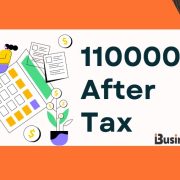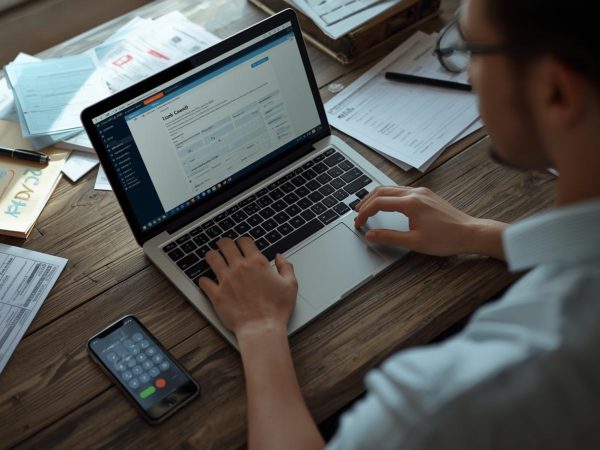
HMRC Tax Return Deadline Warning | File Now to Avoid Penalties
As the tax season draws closer, millions of taxpayers across the UK are rushing to meet the self-assessment tax return deadline set by HMRC. Missing this crucial deadline can lead to costly fines and penalties, even if you owe no tax.
While some proactive individuals have already submitted their returns, a significant number of taxpayers—5.4 million to be precise—are still racing against time to complete their submissions. With HMRC issuing stern warnings about the financial repercussions of missing the deadline, now is the time to act. Filing your tax return on time not only helps avoid penalties but also ensures peace of mind as we start the new year.
In this blog, I’ll break down everything you need to know about the HMRC tax return deadline, the potential consequences of missing it, and how to make the filing process as seamless as possible.
When Is the HMRC Tax Return Deadline?

The HMRC self-assessment tax return deadline is one of the most critical dates in the UK tax calendar. For the 2023–2024 tax year, taxpayers must submit their online tax returns no later than midnight on 31 January 2025.
It’s important to note that this deadline applies to anyone filing their tax return online. If you had planned to file a paper tax return, the deadline for that was 31 October 2024, meaning you’re now left with the online option as your only course of action.
This deadline isn’t just about filing your tax return—it also applies to making payments on any taxes owed. Whether you’re self-employed, earning rental income, or receiving untaxed income above £1,000, this is the date you must meet to avoid penalties.
The 31 January deadline is not flexible, so it’s vital to be prepared well in advance. Set reminders, gather your documents, and allocate time to complete the process without last-minute stress.
What Happens If You Miss the HMRC Tax Return Deadline?
Failing to submit your tax return or pay any taxes owed by 31 January 2025 could lead to a series of penalties and fines. HMRC has a well-defined penalty structure designed to discourage late filings, and the consequences can quickly escalate:
- Initial Fixed Penalty: Missing the deadline by even one day results in an automatic £100 fine. This applies regardless of whether you owe any tax or have already paid the amount due.
- Daily Penalties After 3 Months: If your tax return remains unfiled after three months, HMRC will impose daily penalties of £10, up to a maximum of £900.
- 6-Month Penalty: At this stage, an additional penalty of 5% of the tax due (or £300, whichever is greater) is charged.
- 12-Month Penalty: The same penalty applies after a year, adding yet another 5% of the tax due or £300.
Late payments of taxes owed also attract interest charges and additional penalties:
| Duration of Delay | Penalty on Tax Due |
| 30 Days | 5% of unpaid tax |
| 6 Months | 5% of unpaid tax |
| 12 Months | 5% of unpaid tax |
For example, a taxpayer who files six months late and owes £2,000 could face penalties exceeding £1,000 on top of the taxes owed. These fines serve as a reminder of the importance of timely compliance.
How Do You File Your Tax Return Online with HMRC?

Filing your self-assessment tax return online with HMRC can seem like a daunting task, but with the right preparation and understanding of the steps involved, the process can be relatively straightforward. Here’s a detailed guide to help you navigate through it:
1. Register for Self-Assessment with HMRC
Before you can file your tax return online, you need to be registered with HMRC for self-assessment. This step is particularly important if you are filing for the first time. To do this:
- Visit the HMRC self-assessment registration page and follow the instructions to register.
- Once registered, you will receive a Unique Taxpayer Reference (UTR), a 10-digit number essential for filing your return.
- HMRC will also send you an activation code by post to set up your Government Gateway account. This can take up to 10 working days to arrive, so register well in advance of the deadline.
If you’ve already registered in previous years, simply log in using your existing Government Gateway credentials.
2. Log Into Your HMRC Account
Once you have your UTR and Government Gateway login details, access your account on the HMRC website.
- Navigate to the self-assessment section of your account.
- If this is your first time filing online, you may need to link your UTR to your account before you can proceed.
- Check that your personal details, such as address and contact information, are up to date to ensure you receive all future correspondence.
3. Gather the Necessary Documents
Having the right documents on hand is critical to completing your tax return accurately. These include:
- P60: If you are employed, this form summarises your income and the tax deducted by your employer.
- P45: If you changed jobs during the tax year, your P45 details income earned at your previous job.
- Self-Employment Records: These include details of all income and expenses for the year. Keep invoices, bank statements, and receipts organised to ensure accuracy.
- Dividend Statements: If you receive dividends from investments or company shares, include this information.
- Rental Income Details: If you’re a landlord, you’ll need records of rental income and allowable expenses (e.g., repairs, property maintenance).
- Pension Contributions and Other Deductions: These may reduce your tax liability, so have this information ready.
- Interest Statements: If you’ve earned interest from savings or other investments, you’ll need the figures from your bank or financial institution.
By preparing these documents in advance, you reduce the risk of missing critical information and making errors on your return.
4. Complete Your Self-Assessment Tax Return Online
Once you’re logged in and have your documents ready, it’s time to complete the tax return form. The online system is user-friendly, and HMRC provides helpful prompts to guide you through the process. Here’s what you need to do:
- Select the Relevant Sections: The form is divided into sections based on your income type (e.g., employment, self-employment, rental income, or dividends). Only complete the sections that apply to you.
- Report Income Accurately: Enter your earnings from all applicable sources. Be as precise as possible, as inaccuracies may result in penalties or trigger an HMRC investigation.
- Claim Allowable Expenses: If you’re self-employed or a landlord, ensure you include all allowable expenses, such as office supplies, travel costs, or property repairs. These reduce your taxable income and lower your tax bill.
- Add Deductions and Reliefs: Enter details of pension contributions, charity donations, or other reliefs that may qualify for tax deductions.
Take your time to review each section carefully. The HMRC system will highlight any incomplete or inconsistent fields, giving you the chance to correct errors before submitting.
5. Submit Your Tax Return and Pay Any Tax Owed
Once you’ve completed your self-assessment form and reviewed it for accuracy, you’re ready to submit your tax return. Before you do:
- Use the preview feature to double-check the figures and ensure everything is accurate.
- Keep a copy of your return for your records—you can download and save it as a PDF.
Once submitted, the system will confirm your return has been filed. If you owe tax, you’ll receive details of how much is due, along with instructions for payment. Payments can be made through various methods:
- Bank Transfer: Using your UTR as the payment reference.
- Debit or Credit Card: Payments can be made directly via the HMRC website.
- Direct Debit: Set up a one-time or recurring payment to settle your tax bill.
Ensure any owed taxes are paid by 31 January 2025 to avoid late payment penalties or interest charges. If you have overpaid, HMRC will process a refund once they review your return.
6. Get Confirmation from HMRC
After submission, you’ll receive a confirmation email from HMRC, verifying that your tax return has been filed successfully. Keep this email safe for your records. If you don’t receive a confirmation, log back into your account to check the status of your submission.
Tips for Filing Your Tax Return Online
To ensure a smooth filing process, consider the following tips:
- Start Early: Don’t wait until the last minute to begin. Starting early gives you time to resolve issues like missing documents or forgotten login credentials.
- Use HMRC’s Help Resources: If you’re unsure about any section, refer to the guidance provided by HMRC or attend one of their online webinars.
- Seek Professional Advice: For complex returns, consult a tax advisor or accountant.
- Check for Errors: Even small mistakes, like typos or mismatched figures, can delay the process or result in penalties.
Filing your tax return online with HMRC is an essential responsibility for anyone required to complete a self-assessment. By understanding the process and taking the time to prepare properly, you can ensure a smooth experience and avoid any unnecessary penalties.
What Are Common Mistakes to Avoid When Filing Tax Returns?

Filing a tax return can be stressful, and mistakes are common. Avoid these errors to ensure your submission is accepted without complications:
- Procrastination: Waiting until the last minute often leads to rushed filings and errors.
- Incorrect Figures: Failing to input accurate income or expenses could result in penalties.
- Overlooking Deductions: Many taxpayers miss out on allowable deductions that could reduce their tax bill.
- Missing the Deadline: Even a day’s delay incurs the fixed £100 penalty.
- Incomplete Submissions: Ensure all fields are filled and no documents are missing.
Carefully reviewing your return before submission is key to avoiding these pitfalls.
What Are Some Tips for Filing Your Tax Return on Time?
If you’re still preparing to file, the following tips can help you meet the deadline:
- Start Early: Begin gathering your documents well in advance.
- Stay Organised: Use spreadsheets or accounting software to track your income and expenses throughout the year.
- Seek Professional Help: An accountant or tax advisor can guide you through the process and prevent errors.
- Set Reminders: Use calendar alerts to ensure you don’t forget the deadline.
Proactive planning not only reduces stress but also ensures a smoother filing experience.
How Do HMRC Penalties Impact Taxpayers?
Late filing and payment penalties can have far-reaching effects. Beyond the immediate financial costs, they can create long-term stress. For individuals who rely on accurate tax returns for mortgages or loans, penalties can also damage credibility.
HMRC’s penalty system is designed to deter non-compliance, but it also highlights the importance of proactive tax management.
What Can You Do If You Can’t File Your Tax Return on Time?
If unforeseen circumstances prevent you from filing on time, here’s how to minimise the impact:
- Communicate with HMRC: Contact them as soon as possible to explain your situation.
- File a Partial Return: Submit what you can to avoid the initial £100 penalty.
- Request an Extension: Although rarely granted, extensions may be approved in exceptional cases such as illness or bereavement.
Why Do Tax Deadlines Matter for UK Taxpayers?
Tax deadlines, such as the 31 January self-assessment filing cut-off, play a vital role in maintaining the UK’s tax system. These deadlines are not merely administrative—they help HMRC ensure that taxpayers fulfil their obligations, enabling the government to collect revenues that fund essential services like healthcare, education, and public infrastructure.
For taxpayers, adhering to deadlines is equally important for several reasons:
- Avoiding Penalties: As highlighted, missing the HMRC deadline triggers automatic penalties, even if no tax is due.
- Accurate Financial Planning: Filing on time ensures that you can accurately budget for any taxes owed and avoid last-minute financial stress.
- Maintaining Compliance: Chronic late filing could raise red flags with HMRC, potentially leading to audits or more severe scrutiny.
- Improving Personal Organisation: Keeping track of deadlines helps you stay organised with your income, expenses, and financial records.
Deadlines also help prevent taxpayers from accumulating additional financial burdens. For instance, when payments are delayed, interest charges and surcharges compound the cost of late filing. By prioritising deadlines, taxpayers not only avoid penalties but also gain a sense of control over their finances.
Whether you’re self-employed, a landlord, or someone with untaxed income, tax deadlines serve as a reminder of your financial responsibilities. Meeting them ensures a smoother process and builds trust with HMRC.
What Support Is Available for First-Time Tax Filers?

Filing a self-assessment tax return for the first time can be intimidating, especially if you’re unfamiliar with the process. Thankfully, HMRC and other resources provide support to ensure that first-time filers can navigate the system effectively:
- HMRC Helpline: HMRC offers dedicated phone support to help taxpayers with self-assessment queries. You can get assistance on registering, understanding deductions, and filing.
- Online Tutorials: HMRC provides webinars and step-by-step video guides that walk you through the filing process. These are especially useful if you’re unsure how to use the online portal.
- Tax Software Tools: Several software platforms, such as QuickBooks, Xero, or FreeAgent, integrate seamlessly with HMRC systems. They can automate calculations and reduce the risk of errors.
- Guidance for Self-Employed: If you’re self-employed, HMRC offers resources on how to track income and expenses throughout the year to simplify the filing process.
- Tax Accountants and Advisors: While hiring a professional accountant might come with additional costs, it’s an investment that ensures your return is accurate and takes full advantage of deductions.
For first-timers, the key is preparation. Start by keeping all your records organised—this includes payslips, invoices, receipts, and details of any additional income. Familiarise yourself with what you can claim as expenses and deductions to reduce your tax bill.
Finally, don’t be afraid to ask for help. HMRC and professionals in the field are there to guide you, ensuring that your first filing experience is smooth and stress-free.
Conclusion
With only weeks left until the deadline, there’s no time to delay. Filing your tax return ensures compliance with HMRC rules, avoids financial penalties, and gives you peace of mind as the year progresses.
Start today by visiting the HMRC portal, and take control of your financial responsibilities before it’s too late.
FAQs About HMRC Tax Return Deadlines
What is the deadline for filing my HMRC tax return?
The deadline for online submissions is 31 January 2025.
How do I know if I need to file a self-assessment tax return?
You must file if you’re self-employed, earn rental income, or have untaxed income above £1,000.
Can I appeal against late filing penalties?
Yes, but only under reasonable circumstances, such as illness or bereavement.
How much is the fine for missing the tax return deadline?
An initial £100 penalty applies, even if no tax is owed. Additional penalties accrue over time.
What happens if I make a mistake on my tax return?
You can amend your return within 12 months of submission. Contact HMRC immediately for guidance.
Is there any support for first-time tax filers?
Yes, HMRC provides resources and helplines to assist new taxpayers.
Can HMRC waive penalties for late submissions?
In exceptional cases, HMRC may waive penalties, but you must provide evidence of valid reasons.





